A main idea graphic organizer PDF is a structured tool designed to help identify and organize central ideas. It differs from standard graphic organizers by focusing solely on the main concept without sections for supporting details. Primarily used by teachers for homework and test assignments, it simplifies the process of conveying key ideas effectively.
1.1 What is a Main Idea Graphic Organizer?
A main idea graphic organizer is a tool designed to help individuals identify and organize central ideas effectively. Unlike traditional graphic organizers, it focuses solely on the main concept without sections for supporting details. This simplicity makes it ideal for conveying key ideas clearly. Educators often use these organizers to assign homework or tests, ensuring students grasp the primary idea without getting overwhelmed by additional information. Its straightforward design makes it accessible for various educational purposes, providing a clear and concise way to communicate central themes.
1.2 Purpose of Using a Graphic Organizer for Main Ideas
The primary purpose of a main idea graphic organizer is to help students and learners effectively identify and understand the central idea of a text or topic. By providing a structured format, it enhances learning by visually organizing information, making it easier to comprehend and retain. This tool is particularly beneficial for visual learners, as it presents ideas in a clear and accessible manner. It also supports the development of critical thinking skills by encouraging learners to focus on the essence of the content. Additionally, it aids in breaking down complex information into manageable parts, ensuring a deeper understanding of the subject matter.

Structure and Components of a Main Idea Graphic Organizer
A main idea graphic organizer typically features a central box for the main idea, surrounded by sections for supporting details and key points, enhancing visual organization and clarity.
2.1 Key Components of the Organizer
The main idea graphic organizer includes a central box for the primary concept, with surrounding sections for supporting details, key points, and sometimes images or symbols. This design ensures that the main idea is prominently displayed, while related details are organized around it. The layout is simple and uncluttered, making it easy for users to focus on the core idea without distractions. The organizer’s structure is flexible, allowing customization to suit different content and learning needs. Teachers often use this tool to help students visually map out ideas, making complex information more digestible and accessible for understanding and retention.
2.2 Visual Layout and Design
The visual layout and design of a main idea graphic organizer emphasize clarity and simplicity. It typically features a central box for the main idea, with surrounding areas for key details and supporting information. The clean and uncluttered design helps users focus on the central concept without distractions. The layout is highly visual, often incorporating shapes, lines, or colors to enhance organization and readability. This structured format makes it easier to visually map out ideas, ensuring that the main idea remains prominent while related details are neatly organized around it. The design is flexible, allowing customization to suit various content and learning objectives.
2.3 Sections for Supporting Details
Sections for supporting details in a main idea graphic organizer are designed to provide space for elaborating on the central concept. These areas, often in the form of boxes, bullets, or branching lines, allow users to list key points, examples, or explanations that reinforce the main idea. The layout ensures that supporting details are clearly separated yet connected to the main idea, maintaining a logical flow. This structure helps in organizing information hierarchically, making it easier to visualize relationships between ideas. The inclusion of these sections enhances comprehension and retention by providing a clear framework for breaking down complex topics into manageable parts.
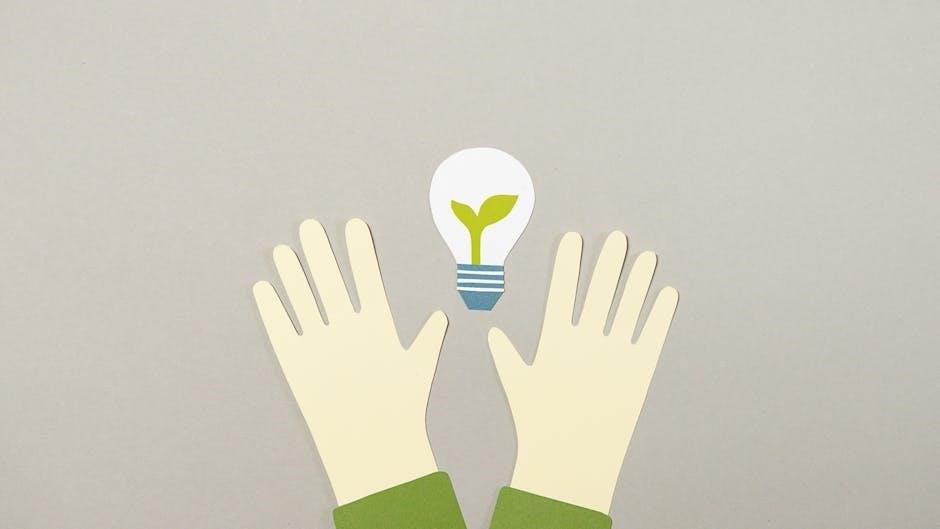
Types of Main Idea Graphic Organizers
Main idea graphic organizers come in various forms, including hierarchical, web-based, chart-based, and digital versions, each designed to visually structure and connect ideas for better understanding and retention.
3.1 Hierarchical Organizers
Hierarchical organizers are structured in a tree-like format, with the main idea at the top and branching subtopics below. This visual tool helps students understand the relationships between ideas, making it easier to organize information logically. It is particularly effective for outlining essays or breaking down complex concepts into manageable parts. The hierarchical structure promotes critical thinking and clarity, allowing learners to see how details support the central idea. Teachers often use this format for lesson planning and to help students develop structured writing skills. It is also versatile, suitable for various subjects and age groups.
- Encourages logical structuring of information.
- Enhances understanding of idea relationships.
- Supports effective writing and planning.
- Improves retention of key concepts.
3.2 Web-Based Organizers
Web-based organizers are digital tools accessible via the internet, offering flexibility and convenience for learners. These organizers often feature interactive elements, such as drag-and-drop functionality and color-coding, to enhance engagement. They are ideal for collaborative projects, as multiple users can contribute in real-time. Web-based organizers also provide auto-save features, ensuring work is not lost. Popular platforms include MindMeister and Google Jamboard. These tools are particularly useful for remote learning and cater to tech-savvy students, fostering creativity and organization. They are easily shareable and can be accessed from any device with internet connectivity, making them a modern alternative to traditional paper-based methods.
- Interactive and user-friendly design.
- Real-time collaboration capabilities.
- Accessible from any device.
- Enhances digital literacy and creativity.
3.3 Chart-Based Organizers
Chart-based organizers are structured frameworks that use rows, columns, or matrices to organize information visually. They are ideal for comparing ideas, identifying relationships, and categorizing details. These organizers often feature tables or grids, making them versatile for various subjects, such as analyzing themes in literature or understanding historical events. Chart-based organizers are easy to customize and can be tailored to suit specific learning objectives. They support visual learners by breaking down complex concepts into manageable parts, fostering clarity and understanding. Their structured format also helps students develop organizational skills and retain information more effectively.
- Versatile for multiple subjects and purposes.
- Structured format for clear organization.
- Supports visual and kinesthetic learners.
- Enhances retention and understanding.
3.4 Digital and Interactive Organizers
Digital and interactive graphic organizers are modern tools designed for engaging and dynamic learning experiences. They often include multimedia features like images, videos, and hyperlinks, making them highly interactive. These organizers can be accessed on computers, tablets, or smartphones, allowing students to work individually or collaboratively in real time. Many digital tools offer drag-and-drop functionality, color-coding, and the ability to add audio or text notes. They are particularly useful for tech-savvy learners and can be easily shared or submitted online. Interactive organizers also provide instant feedback and tracking features, enhancing both teaching and learning outcomes.
- Engages tech-savvy learners with multimedia.
- Supports real-time collaboration and sharing.
- Offers customization with color-coding and notes.
- Provides instant feedback and progress tracking.

Importance of Main Idea Graphic Organizers
Main idea graphic organizers are essential for breaking down complex information into clear, structured concepts, enhancing understanding and retention. They simplify learning by visually separating main ideas from supporting details, making content more accessible and engaging for learners of all ages.
- Clarify relationships between ideas.
- Provide visual structure for information.
- Enhance comprehension and retention.
4.1 Improving Reading Comprehension
Graphic organizers significantly enhance reading comprehension by helping learners identify and organize main ideas and supporting details. They provide a visual structure that makes complex texts more manageable, allowing readers to focus on key concepts. This tool is particularly beneficial for struggling readers, as it breaks down information into digestible parts. By visually separating main ideas from details, organizers improve understanding and retention. They also encourage active reading habits, prompting readers to engage deeply with the material. This makes them an invaluable resource for students and educators aiming to improve literacy and critical thinking skills. Their use fosters a clearer grasp of textual relationships and themes.
4.2 Enhancing Writing Skills
Graphic organizers are invaluable for improving writing skills by providing a clear framework to organize ideas. They help writers identify the main idea and supporting details, ensuring content is focused and coherent. By visually mapping out ideas, writers can better structure paragraphs and maintain a logical flow. This tool is especially useful for planning essays or reports, as it encourages writers to prioritize information and avoid unnecessary details. Over time, using graphic organizers fosters the ability to articulate ideas clearly and effectively, making them an essential resource for developing strong writing abilities. They also teach writers to present information in a well-organized manner.
4.3 Aiding Visual Learners
Graphic organizers are particularly beneficial for visual learners, as they provide a structured and visually appealing way to process information. By using diagrams, charts, and color-coded sections, these tools help learners see relationships between ideas and concepts. Visual learners can better grasp the main idea and its supporting details when presented in a graphic format. This method also enhances retention, as visual elements make information more memorable. For students who struggle with traditional text-based learning, graphic organizers offer a clear and engaging alternative, making complex ideas easier to understand and work with. They cater to diverse learning styles effectively.
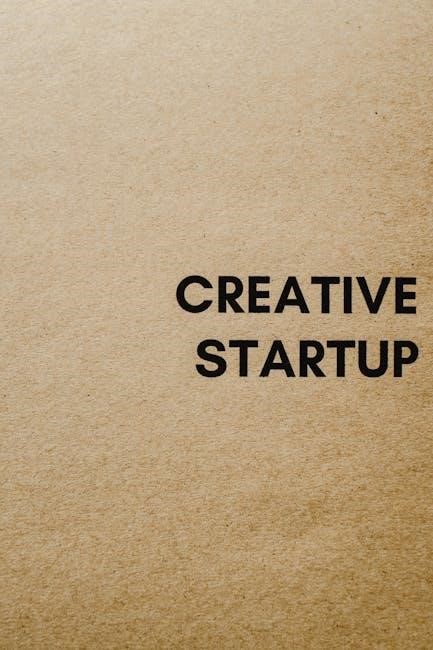
Benefits for Teachers
Teachers benefit from graphic organizers as they simplify lesson planning and classroom management. They provide clear frameworks for instruction, making it easier to assess student understanding and differentiate instruction effectively.
5.1 Classroom Management
Graphic organizers enhance classroom management by providing structured frameworks for lessons, fostering student focus, and promoting active engagement. They help teachers maintain order by ensuring clear expectations and visual guides for tasks, reducing disruptions. Organizers also enable efficient time management, as activities are streamlined and aligned with learning objectives. Additionally, they facilitate smooth transitions between topics, keeping students on track. By visually organizing information, these tools help teachers assess student progress quickly, allowing for timely interventions. Overall, graphic organizers create a more structured and productive learning environment, supporting both teaching and student engagement effectively.
5.2 Lesson Planning
Graphic organizers streamline lesson planning by providing clear frameworks for teaching main ideas and supporting details. They help teachers align lessons with curriculum goals, ensuring content is organized and cohesive. By visualizing the structure of a lesson, educators can break down complex concepts into manageable parts. Organizers also aid in differentiating instruction, as they can be adapted to meet diverse learning needs. Additionally, they enable teachers to integrate various subjects seamlessly, promoting cross-curricular connections. This visual approach ensures lessons are engaging, focused, and aligned with learning objectives, making lesson planning more efficient and effective for both teachers and students.

Benefits for Students
Main idea graphic organizers empower students by simplifying complex information, enhancing comprehension, and promoting critical thinking. They help visualize relationships between ideas, making learning interactive and engaging.
6.1 Developing Critical Thinking Skills
Graphic organizers foster critical thinking by requiring students to analyze and evaluate information. They help identify main ideas, supporting details, and relationships between concepts. By visually structuring content, students can better distinguish relevant from irrelevant information, enhancing their ability to think logically. This tool encourages learners to question, reflect, and make connections, fostering a deeper understanding of material. Over time, students develop the skills to approach problems methodically and solve them effectively. This improvement in critical thinking not only benefits academic performance but also prepares students for real-world challenges.
6.2 Encouraging Active Participation
Graphic organizers effectively encourage active participation in learning by making lessons interactive and collaborative. They provide a structured yet flexible framework for students to engage with content, fostering teamwork and discussion. By visually mapping out ideas, students can share perspectives and build on each other’s thoughts. This hands-on approach makes learning dynamic, allowing students to take ownership of their education. Whether in group projects or individual tasks, graphic organizers promote consistent engagement across various subjects, ensuring that every student has the opportunity to contribute and learn actively.
6.3 Improving Retention of Information
Graphic organizers significantly enhance information retention by transforming complex concepts into visually structured formats. By categorizing and connecting ideas, students can better encode information into their long-term memory; The visual representation helps learners recall details more effectively, as it associates knowledge with specific images or layouts. Additionally, the organized structure reduces cognitive overload, making it easier to review and reinforce learning. This method particularly benefits visual learners, who retain information more effectively when it is presented graphically. Regular use of graphic organizers ensures that students retain key concepts and can apply them in various academic settings.

How to Create or Design a Main Idea Graphic Organizer
Start by defining the purpose and identifying the main idea. Include sections for supporting details and keep the design simple. Use visuals to enhance understanding and organization.
7.1 Steps to Create a Basic Organizer
To create a basic main idea graphic organizer, start by defining its purpose. Identify the main idea and list supporting details. Use a central box for the main idea and surrounding sections for details. Add visuals or symbols to make it engaging. Include headers for clarity and use colors to differentiate sections. Ensure the design is simple and easy to follow. Test the organizer with sample content and make adjustments as needed. Finally, save and share the PDF for easy access and distribution to students or colleagues.
7.2 Choosing the Right Design for Your Needs
When selecting a design for your main idea graphic organizer, consider your audience and purpose. For younger students, use simple, visually appealing layouts with ample space for writing. For older students, opt for more structured designs with clear sections. Ensure the design aligns with the content’s complexity and the learners’ skill levels. Incorporate visuals or charts if they aid understanding. Tools like Canva or SMART can help customize templates. Choose a design that balances functionality and aesthetics to maximize engagement and effectiveness for your specific educational goals.
7.3 Tips for Effective Design
For an effective main idea graphic organizer, prioritize clarity and simplicity. Use clear headings and concise labels to guide users. Incorporate ample white space to avoid overwhelming the viewer. Select legible fonts and consistent colors to enhance readability. Align the design with the content’s hierarchy, ensuring the main idea stands out. Use visuals sparingly but purposefully to reinforce concepts. Ensure the layout is intuitive, allowing users to navigate effortlessly. Test the design with a small group to gather feedback and make necessary adjustments. A well-designed organizer enhances focus and promotes effective learning outcomes.

Using Main Idea Graphic Organizers in the Classroom
Graphic organizers enhance classroom engagement by visually structuring information, fostering critical thinking, and promoting active learning. They help teachers deliver clear, organized lessons and encourage student participation, creating a collaborative environment that supports diverse learning styles and improves academic outcomes.
8.1 Introducing the Concept to Students
Introducing the concept of main idea graphic organizers to students is essential for their effective use. Start by explaining the purpose of graphic organizers and how they help identify key ideas and details. Use simple examples to demonstrate how main ideas are extracted from a text and organized visually. Emphasize the connection between reading comprehension and the structure provided by these tools. Make it interactive by guiding students through a sample organizer, highlighting how it aids in understanding complex information. This foundational introduction ensures students feel comfortable and confident using the organizers in future lessons.
8.2 Integrating Organizers into Lesson Plans
Integrating main idea graphic organizers into lesson plans enhances teaching effectiveness. Start by aligning the organizer with curriculum goals and learning objectives. Incorporate organizers during reading activities to help students identify key ideas and supporting details. Use them as a pre-writing tool to structure essays or summaries. Encourage collaboration by having students work in pairs or groups to complete organizers. Regularly review and discuss completed organizers to reinforce understanding. Digital versions can be shared and edited in real-time, making integration seamless. Consistent use ensures students develop a habit of organizing information, improving both comprehension and expression.
8.3 Assessing Student Understanding
Assessing student understanding using main idea graphic organizers involves reviewing their completed templates for accuracy. Check if students can identify the main idea and distinguish it from supporting details. Use organizers as formative assessments to gauge comprehension during lessons. Provide constructive feedback to guide improvement. Regularly review organizers to track progress and address misconceptions. Digital tools allow real-time monitoring and sharing of feedback. This approach ensures students are grasping key concepts and helps teachers adjust instruction accordingly. Consistent assessment fosters a clear understanding of how well students are mastering the identification of main ideas and their supporting details.
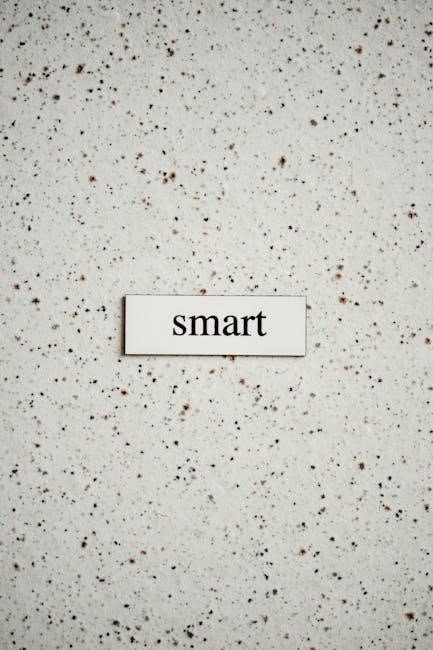
Digital Tools for Creating Main Idea Graphic Organizers
Digital tools like Canva, Adobe Acrobat, and Google Slides simplify creating main idea graphic organizers. These tools offer templates, customization options, and collaboration features for designing engaging PDF organizers.
9.1 PDF Tools for Editing and Sharing
PDF tools like Adobe Acrobat, Foxit PhantomPDF, and Smallpdf are essential for editing and sharing main idea graphic organizers. These tools allow users to add text, highlight key points, and annotate sections of the PDF. Sharing options include email, cloud storage, and direct links, making collaboration easy. Some tools also support converting organizers to other formats for versatility. These features enhance the usability and accessibility of main idea graphic organizers for both teachers and students, ensuring efficient communication and organization of ideas.
- Supports annotations and text additions.
- Facilitates easy sharing and collaboration.
- Offers format conversion options.
9.2 Software for Designing Custom Organizers
Software like Canva, Microsoft PowerPoint, and Google Jamboard enables users to design custom main idea graphic organizers from scratch. These tools offer templates, drag-and-drop features, and collaboration options, making it easy to tailor organizers to specific needs. Teachers can create visually appealing layouts, while students can experiment with designs that suit their learning styles. Additionally, tools like Lucidchart and MindMeister support advanced customization, including color coding and hierarchical structures. These platforms empower educators and learners to create engaging, personalized organizers that enhance teaching and learning experiences.
- Offers customizable templates and designs.
- Supports collaboration and real-time editing.
- Provides features for visual and structured layouts.
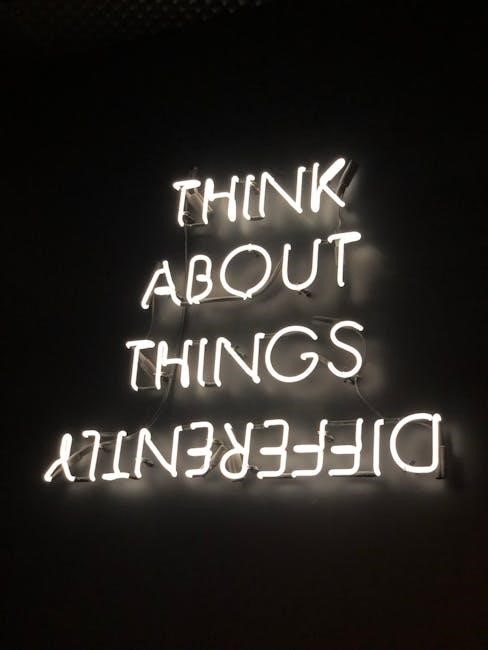
Common Mistakes to Avoid
When creating main idea graphic organizers, avoid common pitfalls to ensure effectiveness. Overcomplicating designs can distract from the main idea, while poor alignment with curriculum goals reduces educational value.
10.1 Overcomplicating the Design
One common mistake is overcomplicating the design of a main idea graphic organizer. Busy layouts with too many colors, fonts, or sections can confuse students and distract from the primary goal. Simplify the design to focus on the main idea and supporting details. Avoid adding unnecessary visuals or complex structures that may overwhelm learners. Stick to basic shapes, clear headings, and ample white space. This ensures the organizer remains user-friendly and visually appealing, making it easier for students to grasp key concepts. Keep the design intuitive to promote effective learning and retention. Simplicity often yields the best results in educational tools.
10.2 Not Aligning with Curriculum Goals
A common error is creating a main idea graphic organizer that doesn’t align with curriculum goals. This misalignment can lead to confusion and ineffective learning. Ensure the organizer reflects the specific skills and content being taught, such as identifying themes or summarizing texts. Avoid generic templates that don’t cater to the lesson’s objectives. Teachers should review curriculum standards before designing or selecting an organizer. This ensures the tool directly supports learning outcomes and helps students achieve the intended educational targets. Alignment enhances relevance and maximizes the organizer’s effectiveness in the classroom.
11.1 Summary of Key Points
Main idea graphic organizers are versatile tools that help students and educators structure information effectively. They simplify complex concepts, enhance comprehension, and promote critical thinking. By organizing ideas visually, these tools aid in identifying relationships between topics and details. They are particularly beneficial for visual learners, fostering engagement and retention. Teachers can integrate them into lesson plans to support diverse learning styles and assess understanding. Available in various formats, including digital and interactive designs, graphic organizers adapt to different educational needs. Their effectiveness lies in their ability to make abstract ideas tangible and accessible, making them invaluable for both teaching and learning environments.
11.2 Final Thoughts on Using Graphic Organizers
Graphic organizers are powerful tools for enhancing learning and teaching. They provide a clear structure for organizing ideas, making complex concepts easier to understand. By visually connecting main ideas and details, they foster deeper comprehension and retention. Their versatility allows them to cater to diverse learning styles, especially benefiting visual learners. Educators can use them to create engaging lessons, while students can rely on them to clarify their thoughts. Ultimately, graphic organizers are invaluable resources for streamlining the learning process, promoting critical thinking, and supporting academic success in various subjects and grade levels.
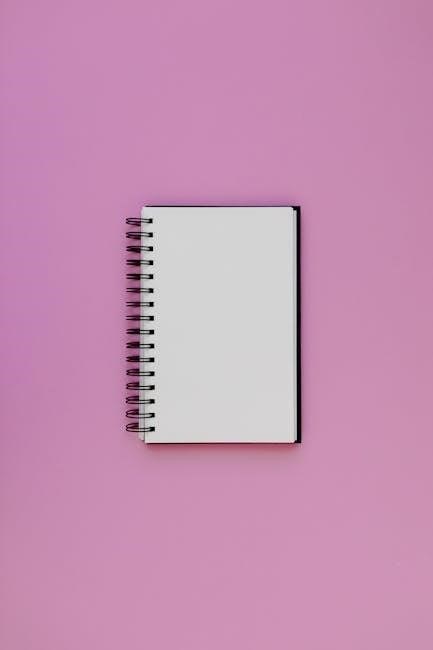
No Responses